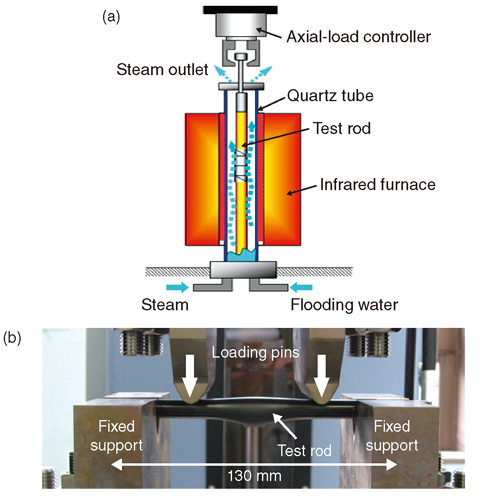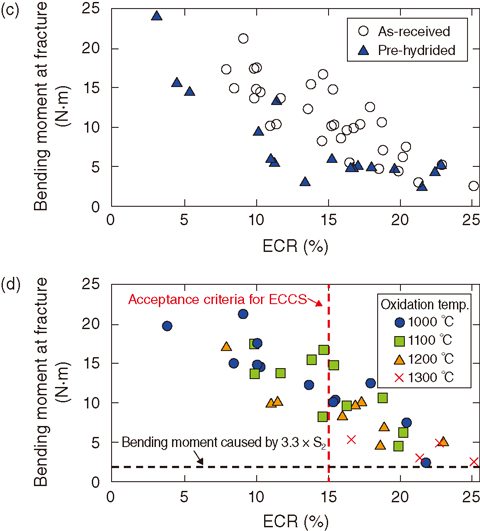
Fig.2-3 (a) Schematic of oxidation and quench test used to simulate a LOCA condition
(b) Ruptured cladding specimen mounted in a four-point-bend test jig

Fig.2-4 Results of four-point-bend-tests on the cladding specimens tested under simulated LOCA conditions
A loss-of-coolant accident (LOCA) is one of the accidents postulated in the safety design of a nuclear power plant. During a LOCA, fuel cladding is exposed to high-temperature steam until cooling water from the emergency core cooling system (ECCS) is injected into the reactor core. The material used for fuel cladding is zirconium-based alloy; in the case where the cladding is exposed to high-temperature steam in the core for a long time during a LOCA, the cladding is severely oxidized and embrittled. The oxidized and embrittled cladding may fracture due to its quench following the water injected from ECCS.
Regarding the fracture prevention in the cladding oxidized during a LOCA, the current Japanese ECCS regulatory criteria directs that the peak cladding temperature (PCT) and the maximum amount of oxidation of cladding should not exceed 1200 ℃ and 15% equivalent cladding reacted (ECR) during a LOCA so that the oxidized cladding can survive the thermal shock at the time of quenching. However, to maintain long-term cooling (LTC) following a LOCA, it is important to maintain a sufficient mechanical strength of the cladding to withstand loads that may be caused by external forces (e.g., earthquake) during the LTC.
By conducting a mechanical strength test on the Zircaloy cladding under simulated LOCA conditions, the fracture resistance of the cladding against loads that may be caused by external forces during LTC is estimated.
A four-point-bend test apparatus (Fig.2-3(b)) is designed to evaluate the fracture-resistance of the cladding that is tested under simulated LOCA conditions.
Fig.2-4 shows the correlation between the bending moment at a fracture of the cladding specimen and ECR. It is found that the bending moment at the fracture decreases due to hydrogen absorption, which simulates high burnup fuel cladding conditions and decreases as ECR increases.The bending moment generated in the fuel cladding during an earthquake is estimated from a design basis seismic ground motion (S2) defined by the previous guideline and is compared with the four-point-bend test results. The results show that, if the PCT and ECR are kept below the limits of the current Japanese ECCS regulatory criteria, it is considered that the cladding can survive a seismic load corresponding to 3.3 times the value of S2 during LTC following a LOCA.
This study provides useful information for maintaining the geometry of reactor core during LTC following a LOCA.